Joe Biagini finding late-season success by pitching more like a reliever
On Wednesday afternoon, the man of the hour for the Toronto Blue Jays was Thomas Pannone — and rightfully so.
The rookie southpaw was extraordinary, pitching seven scoreless innings and coming tantalizingly close to a no-hitter. There was another impressive Blue Jays performance on the mound that day, though, one belonging to Joe Biagini.
Biagini finished off the game with a scoreless ninth, in and of itself far from a huge accomplishment, but the way he did it was noteworthy. The big right-hander utterly overpowered the Orioles’ four, five, and six hitters, putting them all down on strikes on 14 pitches — 12 of them fastballs.
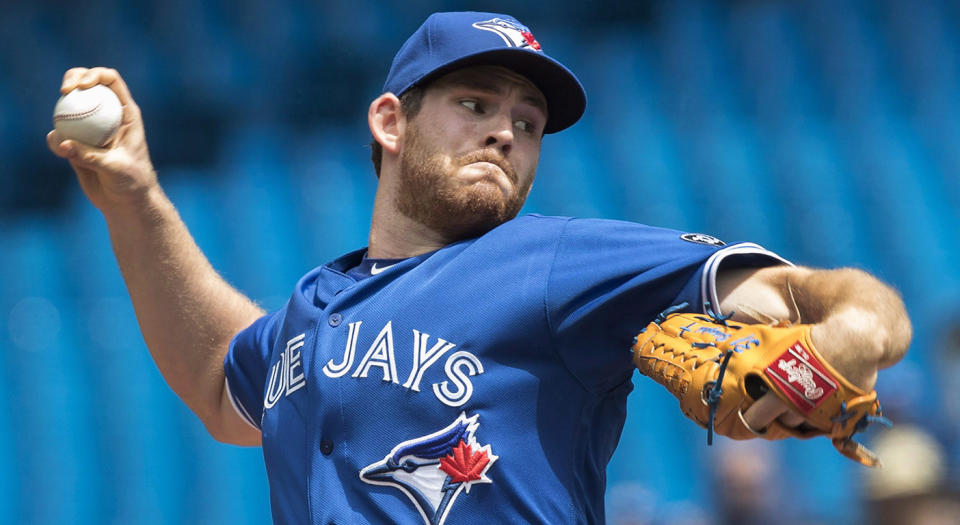
The outing was best captured by the final at-bat of the game where Biagini silenced Craig Gentry on three called fastballs in a row, all at 96 mph.
#1
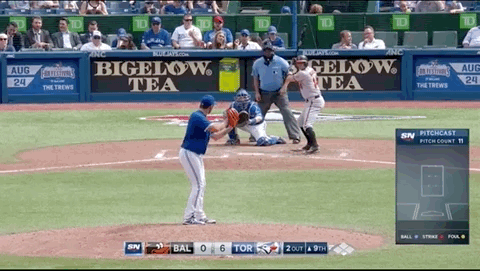
#2
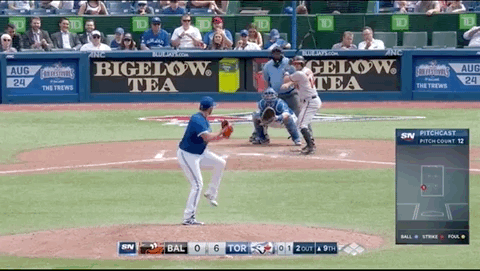
#3
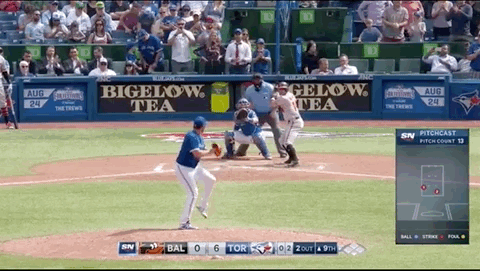
Now, Gentry isn’t exactly Mike Trout, but when you can get a big-league hitter to look at three fastballs in a row that’s a dominant at-bat.
Wednesday’s stellar outing wasn’t an isolated event for Biagini either, as the 28-year-old has been really strong in recent weeks — something that gone largely unnoticed given his ugly season-long 6.00 ERA. However, in his last five outings, spanning nine innings, he’s allowed a single run and walked just two against seven strikeouts.
That’s generally far too small a sample to get to excited about, but it’s clear we’re looking at a different Biagini than the one who struggled for most of the year for a couple of reasons.
The first is a boost in velocity. From May 26 — when Biagini began working out of the bullpen full-time — to the beginning of August, he averaged 94.3 mph on his fastball. That number is plenty respectable, but it pales in comparison to the 95.8 mph his heater has been travelling at this month.
Not only has he been throwing harder, he’s been leaning on the fastball more. In the aforementioned pre-August months in the bullpen Biagini threw a fastball — whether four-seam or two-seam — 61.1 percent of the time. This month that number is 72.5 percent.
That’s particularly important because opposing hitters have feasted on his secondary offerings this season. Here’s a look at how hitters have fared against each of his pitches individually:
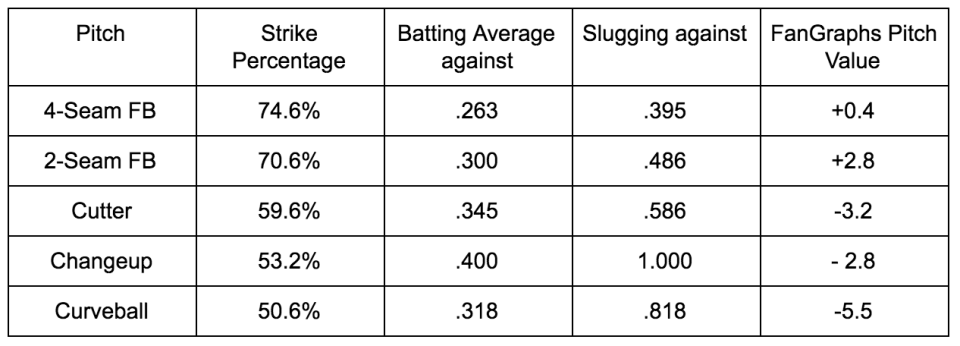
A couple of things about this information is worth noting:
The difference in strike percentage between the fastballs and offspeed stuff is expected based on how those pitches are used, but you don’t want to be hovering around 50 percent on anything.
Batting averages on pitches seriously favours secondary pitches because they are more likely to be throw in pitcher’s counts and result in strikeouts. Even pitchers with great fastballs are normally hit harder on them, which makes Biagini’s disparity especially significant.
FanGraphs’ pitch value numbers here are a total, not a per-pitch number which is explains why the curveball has a lower rating than the changeup for instance since he’s thrown it much more and it’s accumulated more negative value.
Because we’re talking about relief work here small sample size warnings apply.
Although Biagini has a relatively diverse repertoire, it’s clear at this point that his best pitches are his fastballs. He’s going to be most effective when he bombards opponents with the hard stuff, which is what he’s done lately.
If that’s an approach he sticks to, it’s seems safe to say he won’t have a six on the front of his ERA for long — and more importantly he’ll solidify himself in the Blue Jays future plans.
More Blue Jays coverage from Yahoo Canada Sports:



